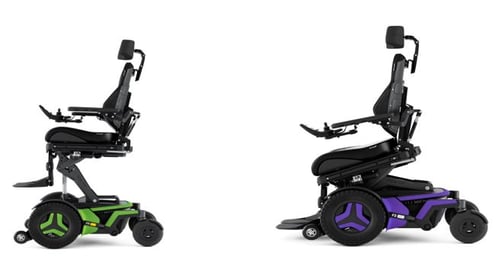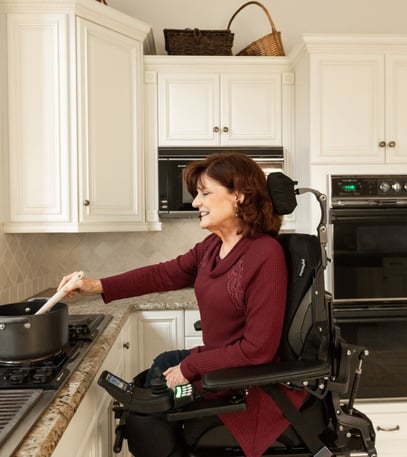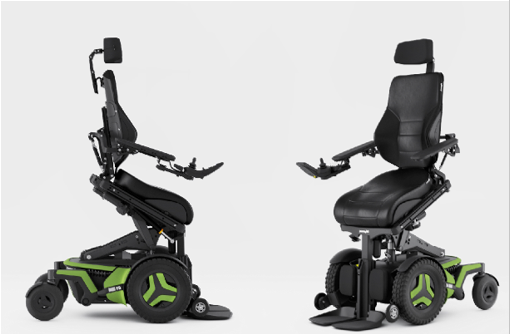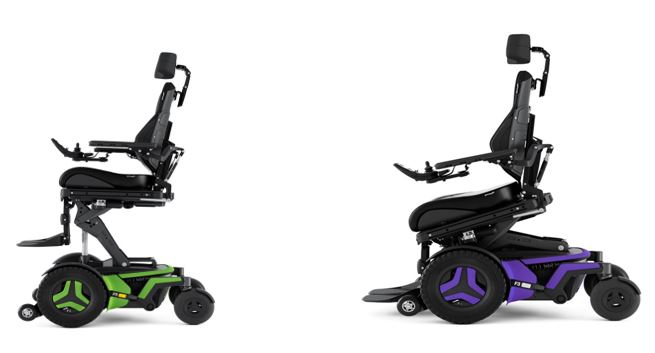Last week we discussed the potential benefits of ActiveHeight, a feature that can increase functional independence for many, however for some, horizontal reach continues to be an issue. Horizontal reach can be challenging for those with limited trunk control, it may be a person has difficulty reaching forward from their wheelchair seat, or they have limited rotation for when they need to access a surface side on. Some of these users continue to have reasonable hand function and could increase their functional independence if they have a means of reaching forward to allow functional use of their hands – which brings us to ActiveReach.

ActiveReach incorporates the use of anterior tilt to bring a person up and forward, this can be further complemented by additional power functions to optimise positioning, depending on the amount of ActiveReach required. ActiveReach allows a person to increase their functional reach by 3” for every 10 degrees of ActiveReach used, with a maximum of 45 degrees of ActiveReach available on the F5.
The use of the modified Functional Reach Test can be a means of assessing whether a person may benefit from, or the functional reach gained from, using ActiveReach. Use of the modified Functional Reach Test can complement functional goals identified by the person, for example a person may identify that they are having difficulty preparing a meal on the stove top as they have difficulty reaching forward to safely stir the food in the pot, or to use utensils to serve the food they have prepared. The modified Functional Reach Test can be used to confirm that the person has limited functional reach, and to show that their functional reach has increased during a trial.

ActiveReach and Active Height can also be used together to allow a person to reach into overhead cupboards, with ActiveReach further increasing a person’s vertical height, as the anterior tilt component of ActiveReach will lift the rear of the seat providing additional height. This combination of functions can be useful for those who have limited shoulder range of movement and are needing additional height to access unmodified environments, for example reaching items on a shelf at the supermarket.

ActiveReach can also be used to assist with standing transfers. Some users have difficulty initiating a sit to stand, particularly if they are unable to move forward on their seat to allow their feet to be placed slightly behind their knees. Use of ActiveReach can place a person in a position that allows for ease of moving from sitting to standing, potentially maintaining an independent or assisted stand transfer. Maintaining this transfer can be important for those who are active in the community or wish to minimise their carer support requirements.
Maintaining independent transfers is further promoted by use of the powered foot support, this foot support is the same one used on the F5VS (Power standing) that allows for a change in vertical height in the footplate, potentially allowing a footplate to be lowered to the floor to allow for ease of standing transfers.

The combination of power seat functions used in ActiveReach is complex, however use of ActiveReach can be made easy for the end user by using smart actuators. The smart actuators on the Permobil chairs allows for the desired ActiveReach position to be programmed into the chair, allowing a person to move to this position by use of a button or switch. This means that the user does not need to remember what sequence to use the power functions in, or where each function needs to be positioned to, for successful use of ActiveReach.
For more information on ActiveReach on our Permobil chairs, please contact sales.nz@permobil.com Our Customer Service team will direct your enquiry to the relevant Territory Sales Manager for your region.
Rachel Maher
Clinical Education Specialist
Rachel Maher graduated from the University of Otago in 2003 with a Bachelor of Physiotherapy, and later gained her Post Graduate Diploma in Physiotherapy (Neurorehabilitation) in 2010.
Rachel gained experience in inpatient rehabilitation and community Physiotherapy, before moving into a Child Development Service, working with children aged 0 to 16 years.
Rachel later moved into a Wheelchair and Seating Outreach Advisor role at Enable New Zealand in 2014, complementing her clinical knowledge with experience in NZ Ministry of Health funding processes.
